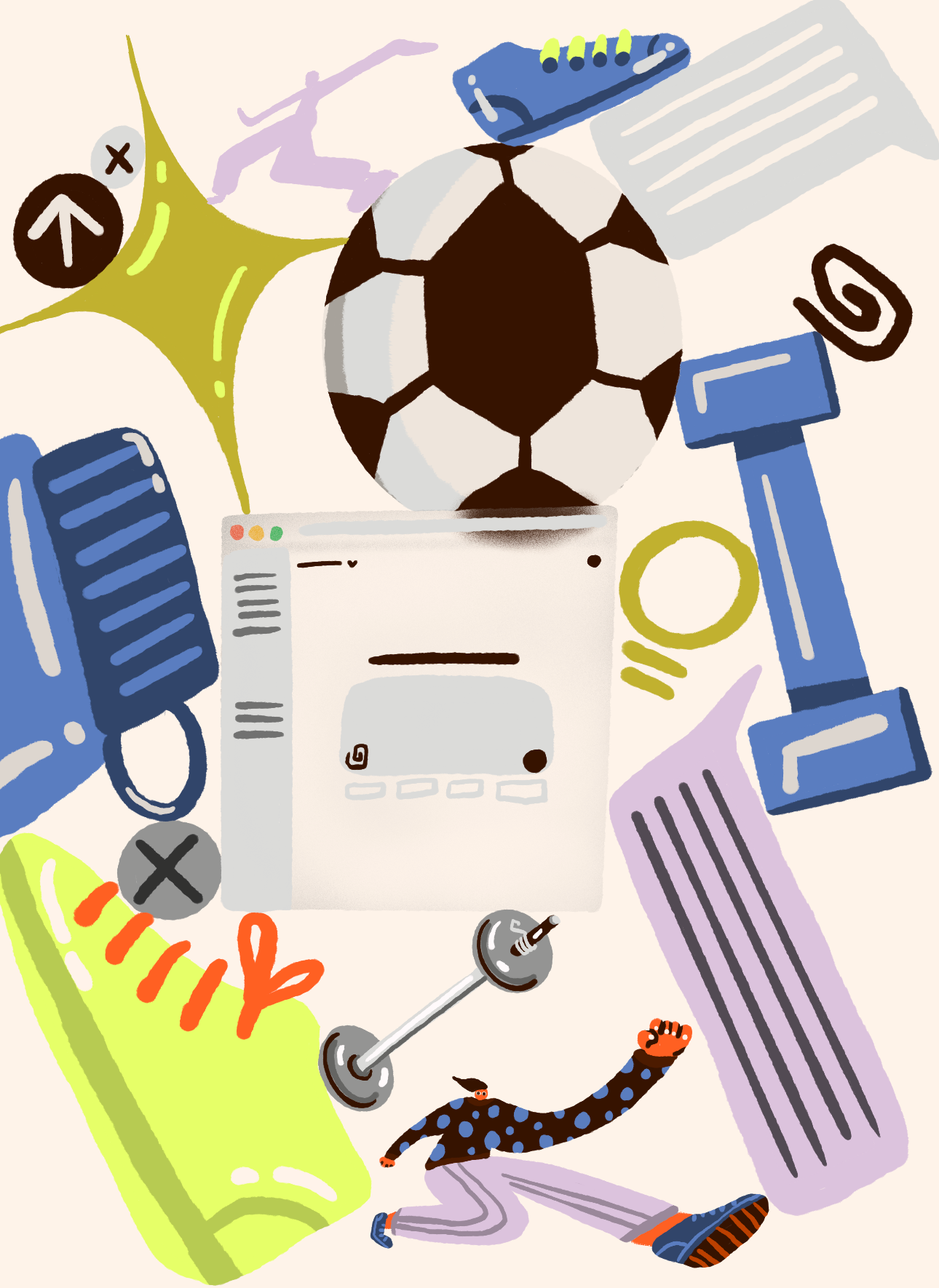How AI impacts your workout
Words by Christine Van Dyk
If you’re like me, COVID kicked your butt. After a week in bed with a persistent cough and lungs that made climbing stairs seem like an olympic event, I thought the worst was over. I didn’t account for long COVID.
For six months I struggled to complete a workout—and when I did, my heart rate fluttered like a hummingbird. I know exactly how high it got because my gym uses special heart rate monitors to measure intensity and the length of time it takes to recover oxygen lost during exercise, a leading indicator of health. The monitor re-evaluates the maximum heart rate every few classes and adjusts the workout according to an algorithm. As my max number climbed higher and higher, I knew something was wrong. Thankfully, when it finally dropped, I spotted the improvement instantly.

I tracked these highs and lows using Artificial Intelligence. While it may seem surprising, it’s not new. Smartwatches, sleep apps, and home gym equipment all rely on AI technology to personalize fitness and create adaptable workouts. Here’s how:
What AI can do for your workout:
Personalized Training Plans — This is where AI shines. Algorithms take into account your goals, fitness level, and physical limitations. They use data to determine rep counts and sometimes to evaluate your form. They combine it with biometrics to track your heart rate and adjust the difficulty of your exercises as you improve—creating a fitness plan just for you. “AI helps you personalize fitness,” Alex Gruhlke, Instructor for Orangetheory Fitness, says. “What exercises should you do back to back? What about on an active recovery day? What kind of interval training will give you the best results? You can even use your information to give your doctor a more complete picture of your health.”
Nutrition Planning — You may know AI apps can create meal plans and recipes to help meet your nutritional goals, track calorie intake, and keep up with macronutrients. However, one of the most exciting features is the way AI tracks your meals. No more food diaries to log what you’re noshing on, this feature uses voice or text to let you describe and track your meals and it even uses photos to recognize ingredients. As the technology learns and adapts, it can quickly calculate what you’re eating, a process that used to require a lot of time and energy.
Enhanced Wearable Fitness Tech — From fitness trackers to smartwatches, AI devices make it easy to analyze your exercise, sleep patterns, and vitals. With real-time data you can instantly track your goals and make informed decisions about your lifestyle. When you wear a monitor, if your heart rate spikes and remains high, you know to take a break. If you struggle to elevate it, you know to increase your intensity.
Virtual Coaching — The best coaches are the ones with the most information. With AI to assist, your trainer can instantly provide you with customized wellness: exercises for the hotel when you travel, plans that support a specific muscle group, sport-specific training, prenatal workouts for every trimester…the options are endless.
Some drawbacks to consider:
Engagement — While AI fitness seems revolutionary, there is one hang up—us! According to a survey by RunRepeat, 71% of users quit their AI apps by the third month. While there’s plenty of excitement after the initial download, it tends to decline with time.
Red Flag Assessment — Unlike a personal trainer, AI can’t talk to you about your stress levels or know the extent of your injury. It can’t tell when a slowdown is a real health concern or something you should push through. That’s why AI used in tandem with fitness professionals seems to be the ideal solution.
Lack of Human Connection — For all it does well, AI can’t offer the human connection you get from a fitness instructor. These professionals perceive more than just physical performance and vital signs, they understand how to motivate you when you’re having a rough day and they provide the X-factor you experience when sweating it out with a group.
“AI alone can’t replicate the insight and inspiration you get from a coach,” Alex says. “We ask AI for information, but we ask coaches for support.”
What’s Next:
• Smart fabrics that trace health metrics
• Fitness rings that not only measure physical activity, but also mental well-being
• Wearable tech that assesses gait biometrics to determine the quality of your steps, reducing joint stress.
• Wearable tech that manages stress with gentle vibrations to stimulate the nervous system, leading to better stress management, better sleep, and improved focus.
• AI tech will improve women’s health by accounting for female wellness issues like menstrual health, mood, hormone fluctuations, and energy levels.
• As metrics become more advanced we can monitor hydration levels, muscle fatigue, stress levels, eye dilation, and oxygenation for highly-personalized feedback.


